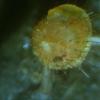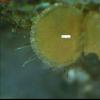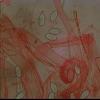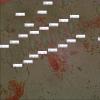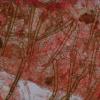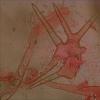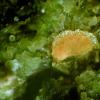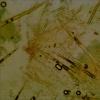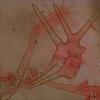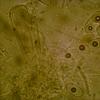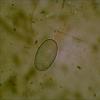
07-01-2026 22:22
 Danny Newman
Danny Newman
Tatraea sp. on indet. hardwood The Swag, Great Sm

07-01-2026 17:29
 Marc Detollenaere
Marc Detollenaere
Dear Forum,On a barkless Populus I found some smal

10-11-2021 17:33
 Riet van Oosten
Riet van Oosten
Add-on topic http://www.ascofrance.com/forum/7059

07-01-2026 10:24
 Danny Newman
Danny Newman
Pezicula sp. on indet. hardwood Appalachian Highl

07-01-2026 10:05
 Danny Newman
Danny Newman
cf. Chaetospermum on XylariaCosby Campground, Grea

02-01-2026 17:43
MARICEL PATINOHi there, although I couldn't see the fruitbody, I

04-01-2026 17:45
 Stephen Martin Mifsud
Stephen Martin Mifsud
I was happy to find these orange asmocyetes which
 Found on horse dung.
Found on horse dung.Fruitbody cup shaped diameter of the toplayer 2.21 mm.
At first the colour is yellow but at the bottom orange, later changing to orange totally.
Hairs are pale brown, septate and pointed with 3-5 armed stellate hairs on lower part of excipulum.
Paraphyses not very much swollen at apex and filled with orange granules.
Spores ellipsoid average 19.87-21.78x10.48-11.52 um, but also extreme measures of 25.50-26.99x12.22-13.02 um.
Measurement of hairs 356.29-464.00x20.33-22.60 um
Oui, il s'agit très probablement de Cheilymenia stercorea (Pers.: Fr.) Boud. Pour en être certain, il manque la description de l'ornementation sporale (avec quelques fines rides), à observer dans le bleu coton lactique, à chaud. Les dimensions sporales, les poils et le substrat, plaident pour cette espèce.
Cordialement
René

Thank you for the information, I have tried to get an ornamentiation on the spores in warm cotton blue but there were no results.
The only thing observed in cotton blue was the blue colouring of the excipulum and a better presentation of the orange granules in the paraphyses.
I have also found a white to yellow smalle disk (diameter 2.21 mm) surrounding the Cheilymenia and forming a plaque. This is probably Cropotus Granuliformis and only was seen together with C. Stercorea.
Il est possible que vous n'ayez pas pu observer l'ornementation sporale, en effet celles-ci sont très fines et souvent difficiles à observer. Par ailleurs, il faut impérativement des ascospores matures, un « bon » BC lactique, un chauffage jusqu'à ébullition et bien sûr une observation au plus fort grossissement.
S'agissant de la deuxième espèce, il est possible, même probable, qu'il s'agisse d'un Coprotus. Vous aurez relevé la formation d'une bulle de gaz - DE BARY bubbles – dans les ascospores. Toutefois, les photos des éléments microscopiques du haut et à droite de l'apothécie, appartiennent sans aucun doute à une espèce du genre Cheilymenia.
Amicalement
René
?




